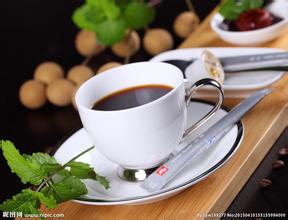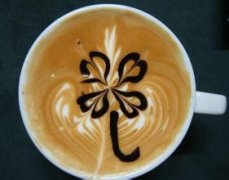How to evaluate coffee like a professional cup tester?

Coffee cup testing process:
1. A 5-to 6-ounce coffee cup is recommended. The cup should be kept clean and has no obvious smell.
two。 The chromaticity after baking should be light or medium light, preferably measured by a colorimeter. The sample should be baked within 24 hours before the cup test and then placed in a sealed container for at least 8 hours.
3. The coffee beans should be ground immediately before the cup test, not more than 15 minutes from the water injection. The particles should be slightly rough, and 70% to 75% of the particles can pass through the standard American No. 20 sieve. Before water injection, cup testers should evaluate the aroma of dry powder by sniffing.
4. Generally speaking, the brewing ratio is 8.25g coffee with 150ml water, and the error is controlled within 1/4 grams.
5. The brewing water must be clean and tasteless and should not be distilled or soft water (the ideal level for total soluble solids is 125to 175PPM). The water temperature should be 200 degrees Fahrenheit and the brewing time should be 3 to 5 minutes without any stirring.
6. After the dregs are soaked, the floating coffee powder will form a "skin" on the surface. Press the powder into the bottom of the cup with a special spoon, then stir gently to smell the wet aroma coming from the rising steam. The final aroma score of coffee is a combination of dry and wet aroma scores.
7. Cool the coffee to 160 degrees Fahrenheit, pick up and throw away the coffee grounds floating on the surface, sip loudly into your mouth, make the coffee liquid fully cover the whole mouth, and evaluate its taste and aftertaste. At about 150 degrees Fahrenheit, evaluate the acidity, mellowness and balance of coffee (that is, the combination of taste, aftertaste, acidity and mellowness). When coffee falls to room temperature, begin to assess its sweetness and evenness, as well as its clarity-whether there is a negative impression of coffee from entrance to spit. Add up all the scores and give the total score.
Important Notice :
前街咖啡 FrontStreet Coffee has moved to new addredd:
FrontStreet Coffee Address: 315,Donghua East Road,GuangZhou
Tel:020 38364473
- Prev

A brief introduction to the varieties of Rasuna Wahana Manor in Sumatra Coffee producing area of Indonesia
It was the same for me to drink coffee. I felt her pleasure and her touch in my mouth, which was a wonderful experience after all. Then France and Britain became interested in Bali, but they did not gain a foothold there as the Netherlands did. The civil war against the royal family since then was the most chaotic page in the history of Bali. Due to one
- Next

Professional coffee knowledge popularization: what is 4C coffee certification organization?
4C certification is a widely accepted management rule in the world, which involves the sustainable development of coffee cultivation, production, processing and other aspects of the supply chain, including social, environmental and economic principles. Coffee practitioners are required to protect biodiversity, protect all kinds of national endangered animals and plants, correctly use and handle pesticides and other chemicals, protect the natural environment and
Related
- Does Rose Summer choose Blue, Green or Red? Detailed explanation of Rose Summer Coffee plots and Classification in Panamanian Jade Manor
- What is the difference between the origin, producing area, processing plant, cooperative and manor of coffee beans?
- How fine does the espresso powder fit? how to grind the espresso?
- Sca coffee roasting degree color card coffee roasting degree 8 roasting color values what do you mean?
- The practice of lattes: how to make lattes at home
- Introduction to Indonesian Fine Coffee beans-- Java Coffee producing area of Indonesian Arabica Coffee
- How much will the flavor of light and medium roasted rose summer be expressed? What baking level is rose summer suitable for?
- Introduction to the characteristics of washing, sun-drying or wet-planing coffee commonly used in Mantenin, Indonesia
- Price characteristics of Arabica Coffee Bean Starbucks introduction to Manning Coffee Bean Taste producing area Variety Manor
- What is the authentic Yega flavor? What are the flavor characteristics of the really excellent Yejasuffi coffee beans?

